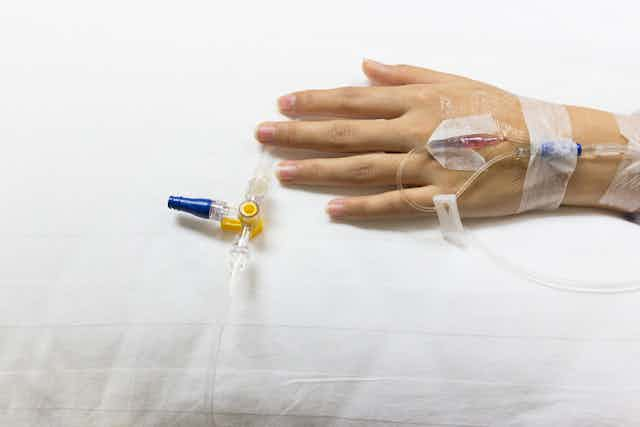As mathematicians, it came as a big surprise when we learned that mathematical models had predicted the way to stop antibiotic resistance was to give pills to patients almost at random. Doctors call this “antibiotic mixing”. The theory goes that if you take a mix-things-up approach to antibiotic management, life threatening pathogens have to hit a fast moving target and won’t be able to evolve resistance very easily.
Several trials have tested this idea in the clinic, but there’s no evidence that it works. And our work shows why: antibiotic mixing is not the best thing to do, not even in theory. Treatments that personalise the patient do better.
It goes without saying that we’d like to preserve antibiotics for future generations. But it’s not clear that this is possible. After all, the microbes we treat are adept at evolving resistance. So what should doctors do to keep future generations safe from harmful infections that can cause terrible diseases like sepsis? Antibiotics are needed to treat sepsis and it kills more people than lung cancer each year in the UK.
Researchers have asked questions like this for many years. Finding new drugs is an important part of the solution but antibiotics are hard to find, expensive to develop and, even if we get them into the clinic, no antibiotic is evolution-proof. The drugs will, in all likelihood, eventually stop working.
Our only option is to use antibiotics wisely, or appropriately, as the UK’s chief medical officer (CMO) puts it. Meaning, we should only use the right drug for the right kind of infection, and even, if possible, avoid using them at all. After all, we know only too well that using the wrong antibiotics promotes resistance. Although the mere use of antibiotics promotes resistance, too.
Hope lies with another idea. We could try the antibiotic crop rotation strategy that uses different antibiotics depending on which month we’re in. This intervention is known as “antibiotic cycling”. And yet, with more trials ongoing, there’s no evidence that this works any better than mixing. All in all, the data on what best to do amounts to millions of patient days of treatment, yet it is still patchy and uncertain.
Revisiting old simulations
To try and understand this uncertainty, we re-analysed the published mathematical models to understand why theory should provide such unusual predictions, particularly ones not borne out by clinical data. Our conclusion is this: mathematical models used as the basis of clinical trial design were overly reliant on computer simulations of rare situations that were unlikely to represent clinical cases. When our analysis accounted for this, it became clear that antibiotic cycling and mixing are not hugely different in terms of the levels of resistance that develops.
However, a difference does appear when ideas from personalised medicine are dropped into models and antibiotics are prescribed as appropriately as possible, just as the UK’s CMO recommends. A prediction from our mathematical study is that we need effective diagnostic devices capable of giving doctors rapid and reliable insight into the genetics and drug resistance profiles of the infectious microbes that are causing the patient difficulties.
This common sense conclusion forms part of the recommendations that the panels convened by economist Jim O'Neill recently presented to the UK government.
Lots of researchers globally, from molecular biologists to medicinal chemists to computer scientists, are working on the problem of personalising antibiotic treatment. So it is helpful that the theory and practise of antibiotic stewardship may be converging onto a common solution after, give or take, three decades of research effort.

